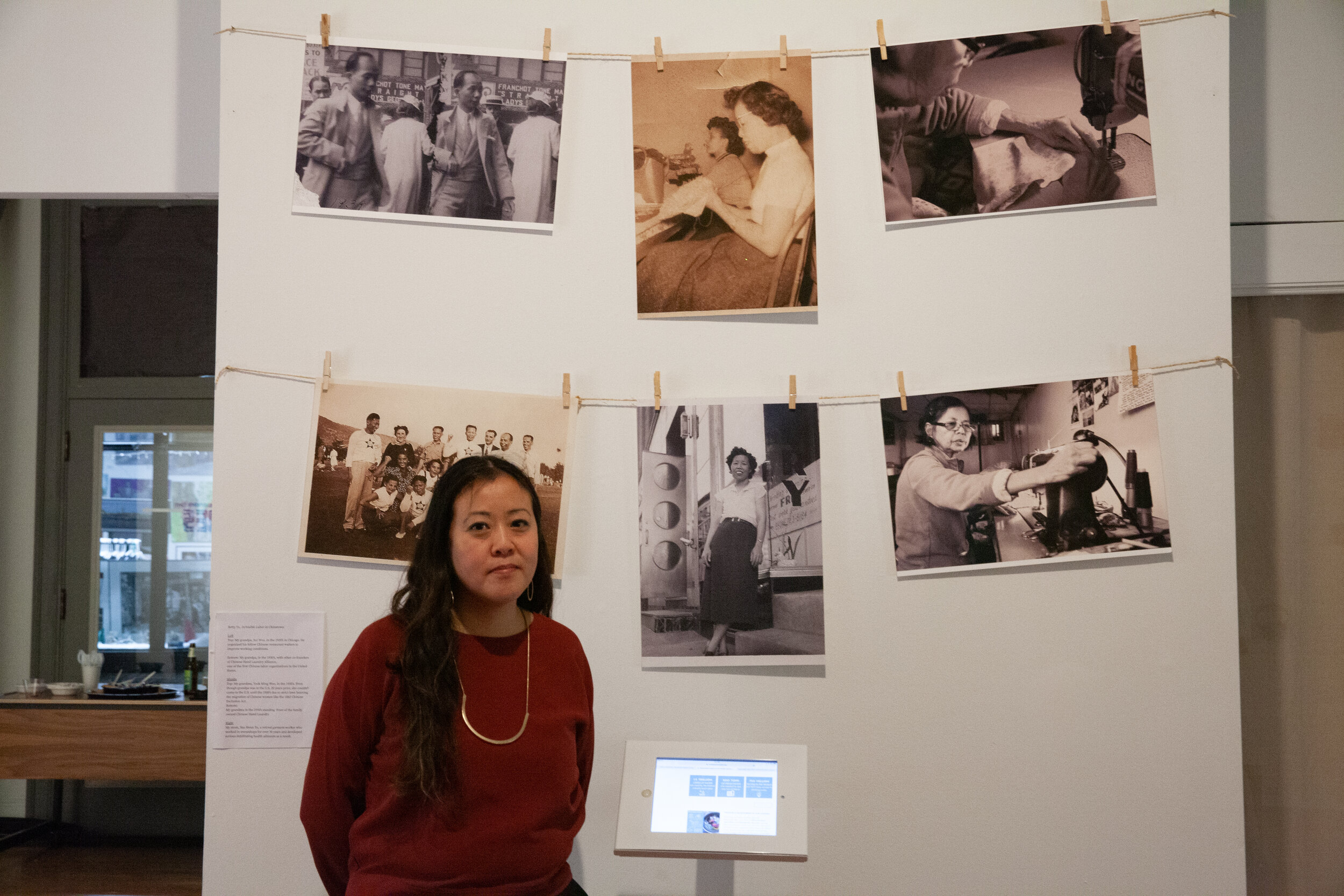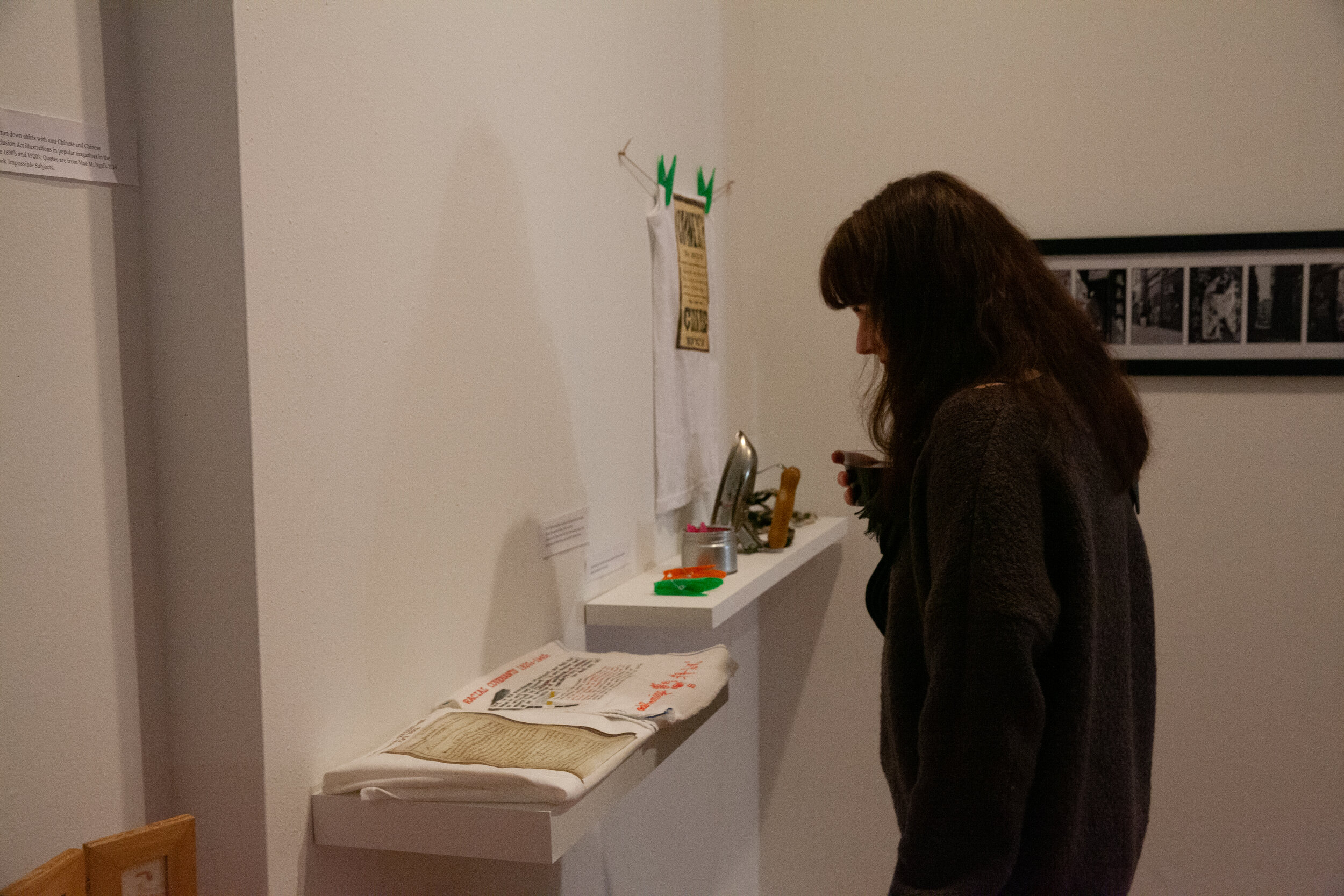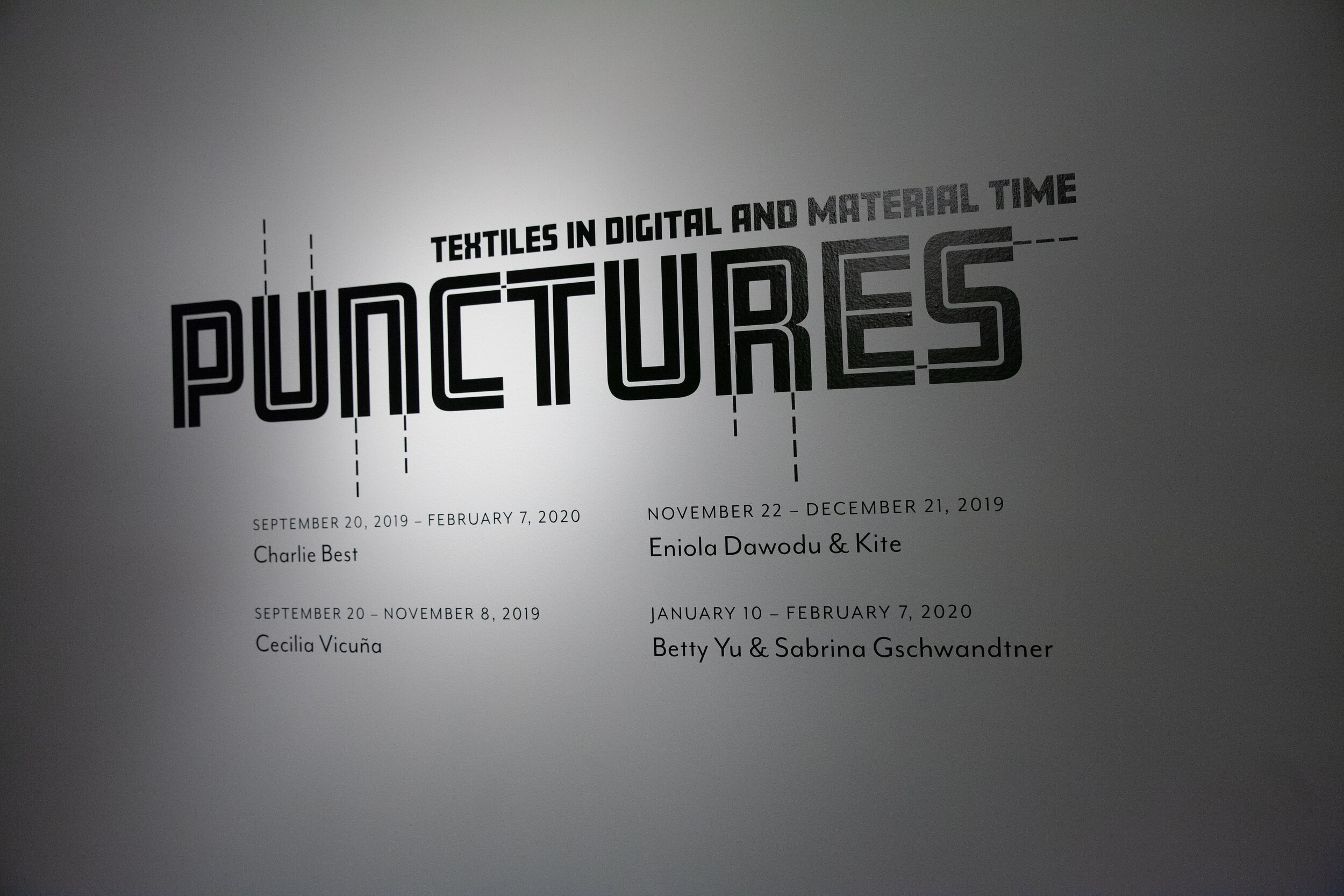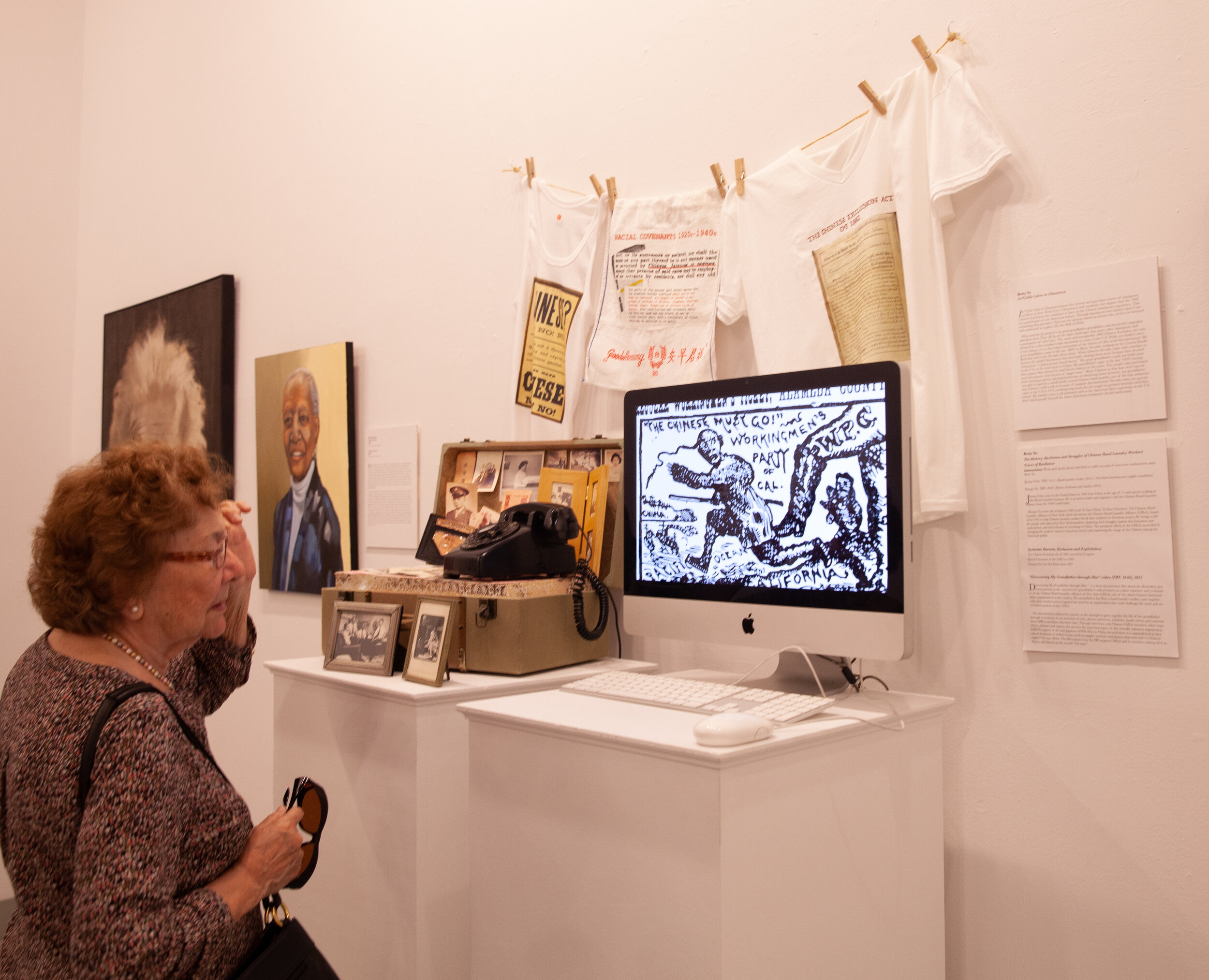In/visible Labor
in Chinatown
"In/visible Labor in Chinatown” honors the current and past labor stories of immigrant workers in New York City’s Chinatown and examines the impact that the 1882 Chinese Exclusion Act continues to have on the Chinese immigrant experience. This is a painful part of our American history. Through sharing my own personal family’s story I am reclaiming that narrative.
“In/visible Labor” and “The Garment Worker” exhibited as a part of the Punctures Series at Squeaky Wheel Film & Media Art Center in Buffalo, New York (Jan-Feb 2020)
Exhibition of “In/visible Labor in Chinatown” at Reclaiming the Hall at the Hall of Fame Art Gallery, Bronx Community College (Sept-Oct 2019)
What anchors the project is my great grandfather, grandfather and parent’s migration and labor story. They all faced the same challenges that many other immigrant and communities of color face. The very racist and xenophobic 1882 Chinese Exclusion Act only allowed for a few hundred male merchants to come to the U.S. My family’s story is not unique but is pretty much a first hand testimonial of the history of this racial discrimination. My great grandfather came in the late 1800’s to Reno, Nevada working on the Central Pacific Railroads or Silver Mines. White laborers literally came with crowbars to destroy the small Chinatowns they had built, chasing them away because they deemed Chinatown “a physical and moral threat”. My great grandfather couldn’t build roots in the U.S. so he went back to China. My grandfather came in the late 1920’s buying false papers that showed he had blood relatives in the states, these were often called “paper sons”. Many Chinese at that time were barred from buying property, opening businesses or obtaining loans, My grandfather was able to operate a small family owned Chinese hand laundry, one of the only industries that Chinese could work in because of rampant discrimination. Fast forward - my parents came to the U.S in 1972 working long hours for low wages in garment factories until they retired. This is all intimately tied to the American labor experience in the U.S. that I think people beyond the Asian American community should understand.
“In/visible Labor in Chinatown” uses new media storytelling techniques to bring to life the labor stories of Chinese immigrants from the 1900’s to today. Through a combination of research methods that include online and physical archives and libraries, participatory interviews, community based and oral history collection – I construct audio, video and new media stories that conjure up the stories of those who worked in the hand laundry, restaurant, and garment industries; operated small family businesses, as well as those who are part of the informal labor economy such as street vendors, peddlers and sex workers. These stories are often invisible and untold to a wider audience. This project would aim to bring visibility to the invisible labor that is the backbone of this community and the larger city.
The labor conditions of the most vulnerable immigrant groups, like the Chinese in the U.S. are so intimately tied with the (racist) history of U.S. immigration policies that favored European migrants over non-European. It wasn’t until 1965 when there was more of a high demand for a growing workforce that non-Europeans were systemically allowed into the U.S. with the Immigration Act passing. These immigration and labor policies are important aspects I will identify in this project. These would be woven into the people’s stories. This is all intimately tied to the Chinese American labor experience in the U.S.
“Discovering My Grandfather through Mao “ is a short documentary film about the filmmaker's personal journey as she uncovers her grandfather’s radical history as a labor organizer and co-founder of the Chinese Hand Laundry Alliance of New York (CHLA), one of the oldest Chinese-American labor organizations in this country. Her grandfather, Sui Woo, a hand laundry worker came together with other workers and recognized the need for an organization that could challenge the racist and anti-Chinese policies in the 1930's.































